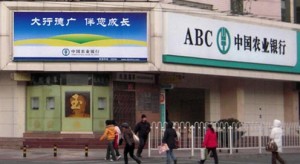 Chengdu, capital of southern Sichuan province, answered the call to stimulate the economy by presenting a plan to build a railway center modeled on London’s Waterloo station, writes Reuters. Only that this station was not a pretty ambitious project.
Chengdu, capital of southern Sichuan province, answered the call to stimulate the economy by presenting a plan to build a railway center modeled on London’s Waterloo station, writes Reuters. Only that this station was not a pretty ambitious project.
“I was shocked when I saw Waterloo station. It was so small”, said Chen Jun, director of Chengdu Investment Communications, the company that built the new Chinese terminal. “I realized that perhaps we need a station several times bigger to meet our city needs” he said.
In a number of infrastructure projects typically Chinese, Chengdu, which built a terminal twice larger than originally intended, borrowed 3 billion yuan ($473 million) from a state bank to finance the investment, then set a deadline for construction, and the project was completed two years later. But instead of receiving praise that it expected to have contributed to stimulate the economy, Chengdu Communication and many of the 10,000 local funding bodies have been strongly criticized for dismal side effects of construction frenzy.
Bridges to nowhere
Local authorities have accumulated a large amount of bad loans, some of this debt was made to finance the construction of bridges to nowhere or meaningless projects, which now threatens to affect economic growth in a time when the global economy enters into a dive. This is combined with other systemic risks facing China, including a drastic decline in the housing market and a rapid increase in bad loans.
Local authorities have accumulated at the end of last year a debt of 10.7 billion yuan. The government expects 2.5 to 3 billion yuan in loans to convert in harmful loans, while Standard Chartered believed that 8-9 billion yuan will not be reimbursed (equivalent to 1.2 to 1.4 billion dollars). As a result, any default could be even higher than the $700 billion U.S. bailout in 2008. The risk of bankruptcy increases. For example, for almost 85% of loans granted by financial institutions to local authorities in the northern province Liaoning there were not made service payments last year, a state audit notes in a report posted on the website of Liaoning Daily.
But, during the visits and interviews in the means of transportation traveling all over China, officials did not seem worried. They say that they did nothing else than follow the directives coming from Beijing to keep growth on track and the central authorities would certainly act to save them. Perhaps their lack of concern is justified. Beijing, which holds more than $3 billion in foreign reserves, is surely having financial resources to save them, as it has done in the past – it set up asset management companies to help China’s top banks to escape high volume of loans that were harmful in the late 1990s.
But China is vulnerable to a global recession and will need every sector of the economy to function well to avoid a serious crisis. Infrastructure boom isolated the economy from the export collapse three years ago. Beijing’s power declined in the meantime. Inflation is very high, and if it would inject money into the economy, China would only make things worse. Barclays Capital says that a global recession will generate a “hard return” of China’s economy, given that GDP growth is much lower than the 8% minimum considered necessary to ensure the creation of enough jobs to cope with migration of the population to urban areas.
In Chengdu, Chen, who is lying on a couch in his office, admits that the city will have large problems to cover costs related to construction of Waterloo station version. “We are still unable to reflect in accounting problems that may arise from the investment in the railways of Chengdu,” said Chen. “In the future we might have problems when we have to repay the loans that will reach maturity”.
